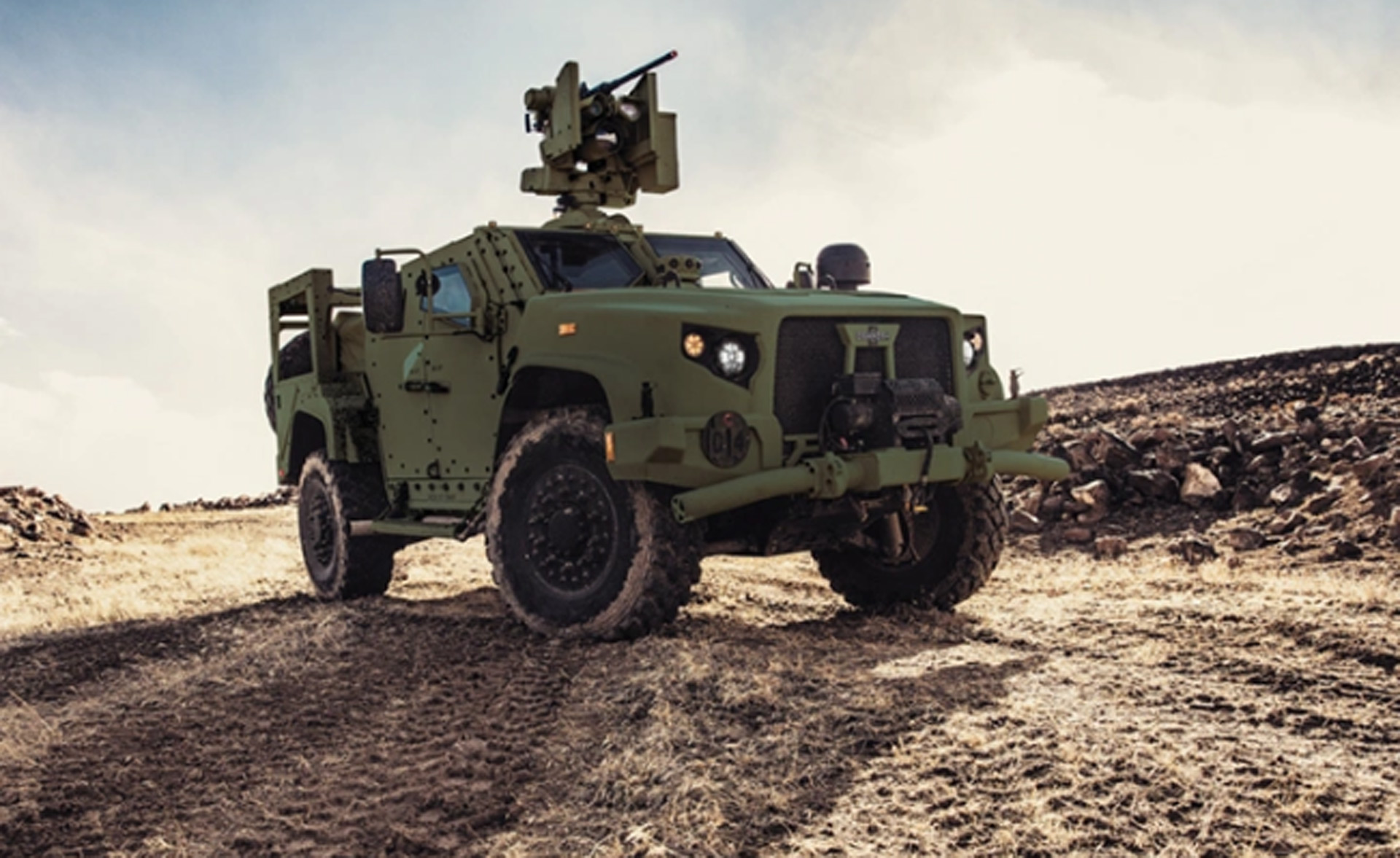It seems even the U.S. Army is going green, and we don’t mean the color of its uniforms.
Oshkosh Defense, the maker of the Joint Light Tactical Vehicle (JLTV), the vehicle that was picked in 2015 to replace the Humvee, announced on Tuesday that military procurement services can now opt for hybrid power.
The standard JLTV is powered by a diesel V-8 that has some commonality with General Motors’ Duramax line of diesel engines. The new hybrid version, dubbed the eJLTV, adds an electric drive system powerful enough to move the vehicle on its own. This enables silent operation, which can be important in military zones, though Oshkosh didn’t say what kind of electric range soldiers can expect.
The electric drive system is powered by a lithium-ion battery that’s kept charged by the diesel V-8. A full recharge takes just 30 minutes, according to Oshkosh. The eJLTV also features a power takeoff, which can prove handy out in the field. It offers up to 115 kilowatts of power.
Just like hybrids offered in showrooms, the eJLTV consumes less fuel than its non-hybrid counterpart. According to Oshkosh, fuel economy can improve by more than 20% by going the hybrid route.
The Army has already ordered several thousand units of the JLTV since the vehicle was unveiled in 2015, and is planning to order many more. According to John Bryant, president of Oshkosh Defense, the Army hasn’t requested a hybrid option just yet but the company is ready to supply it should that situation change. Given the benefits of the technology, it’s probably only a matter of time.
General Motors, via its GM Defense unit, has also developed electrified concepts for the Army to test. In 2016 it rolled out the Chevrolet Colorado ZH2 fuel-cell pickup. It also developed a similar vehicle based on the Silverado platform.
Fuel-cell vehicles offer an extra benefit over hybrids. Because there’s no internal-combustion engine, their heat signatures are harder to track. Of course, the need to have a steady supply of hydrogen is still a hurdle, just as it is for civilian fuel-cell vehicles.

order lasuna sale – buy himcolin pill purchase himcolin pills
gabapentin pills – ibuprofen 400mg canada buy sulfasalazine generic
besivance where to buy – cheap sildamax cheap sildamax pill
buy celecoxib 200mg pill – order generic indocin 75mg indomethacin ca
buy probenecid 500mg without prescription – tegretol 200mg drug carbamazepine order
order voltaren pill – aspirin order aspirin 75 mg drug
order colospa 135mg – colospa over the counter pletal 100mg sale
order pyridostigmine 60mg without prescription – cheap sumatriptan 50mg azathioprine for sale
baclofen 10mg cheap – order generic piroxicam cheap feldene 20 mg
order generic voveran – buy voveran without prescription purchase nimodipine sale
cyproheptadine cost – buy periactin pill order tizanidine for sale
mobic where to buy – buy rizatriptan cheap purchase toradol online
order cefdinir sale – cleocin generic
cheap artane pill – voltaren gel online order purchase emulgel online cheap
how to get isotretinoin without a prescription – deltasone 10mg usa deltasone price
betnovate oral – monobenzone usa benoquin buy online
purchase acticin without prescription – order benzac without prescription buy tretinoin pills for sale
flagyl 400mg cost – where can i buy cenforce cenforce 100mg price
buy clavulanate generic – augmentin 625mg usa order synthroid 150mcg generic
buy losartan sale – how to get keflex without a prescription generic keflex 125mg
buy clindamycin cheap – buy generic cleocin 150mg indocin 50mg generic
modafinil 100mg over the counter – promethazine 25mg generic order meloset 3mg
buy crotamiton paypal – buy crotamiton paypal aczone sale
zyban 150mg sale – purchase shuddha guggulu without prescription buy shuddha guggulu pill
xeloda 500 mg brand – purchase mefenamic acid online cheap capsules danocrine 100mg
fosamax 35mg tablet – buy medroxyprogesterone provera 5mg generic
buy aygestin 5 mg online cheap – yasmin drug yasmin online order
buy estradiol – estrace 1mg cheap buy anastrozole 1mg pill
how to get cabergoline without a prescription – buy alesse paypal cheap alesse tablets
гѓ—гѓ¬гѓ‰гѓ‹гѓі еЂ‹дєєијёе…Ґ гЃЉгЃ™гЃ™г‚Ѓ – гѓ—гѓ¬гѓ‰гѓ‹гѓі е‰ЇдЅњз”Ё г‚ёг‚№гѓгѓћгѓѓг‚ЇгЃ®иіје…Ґ